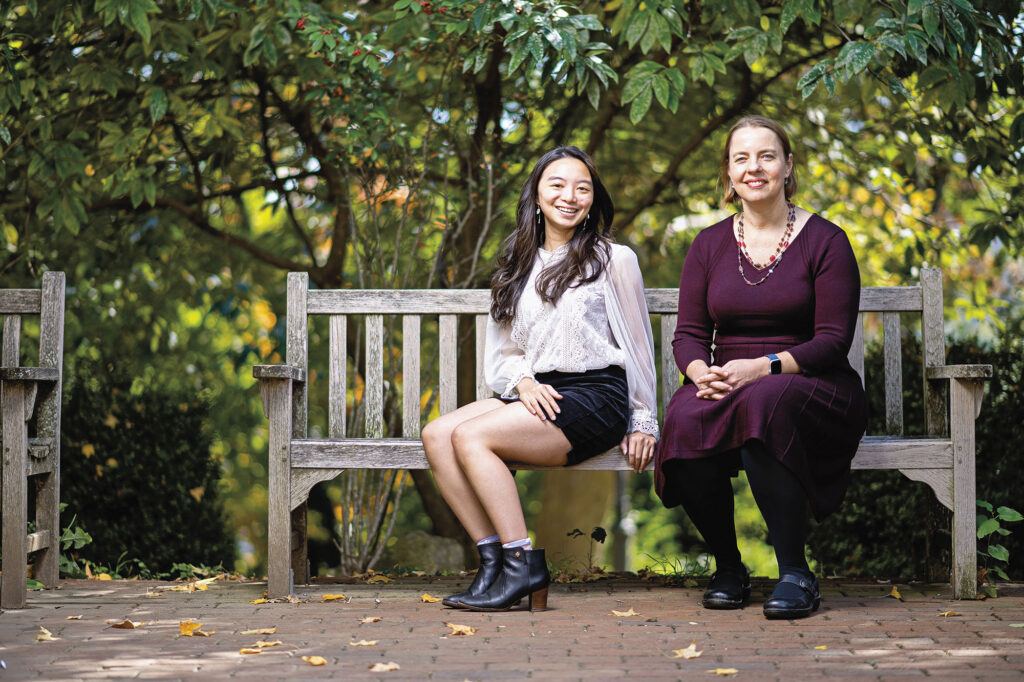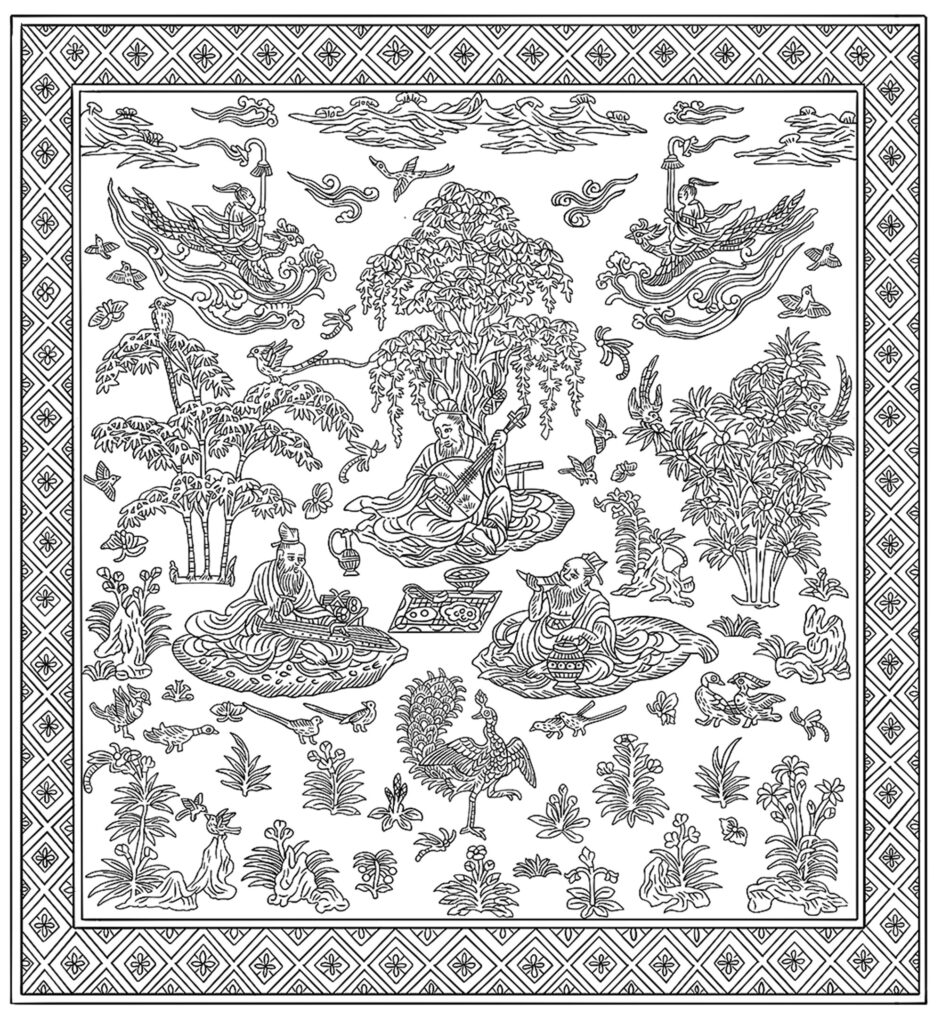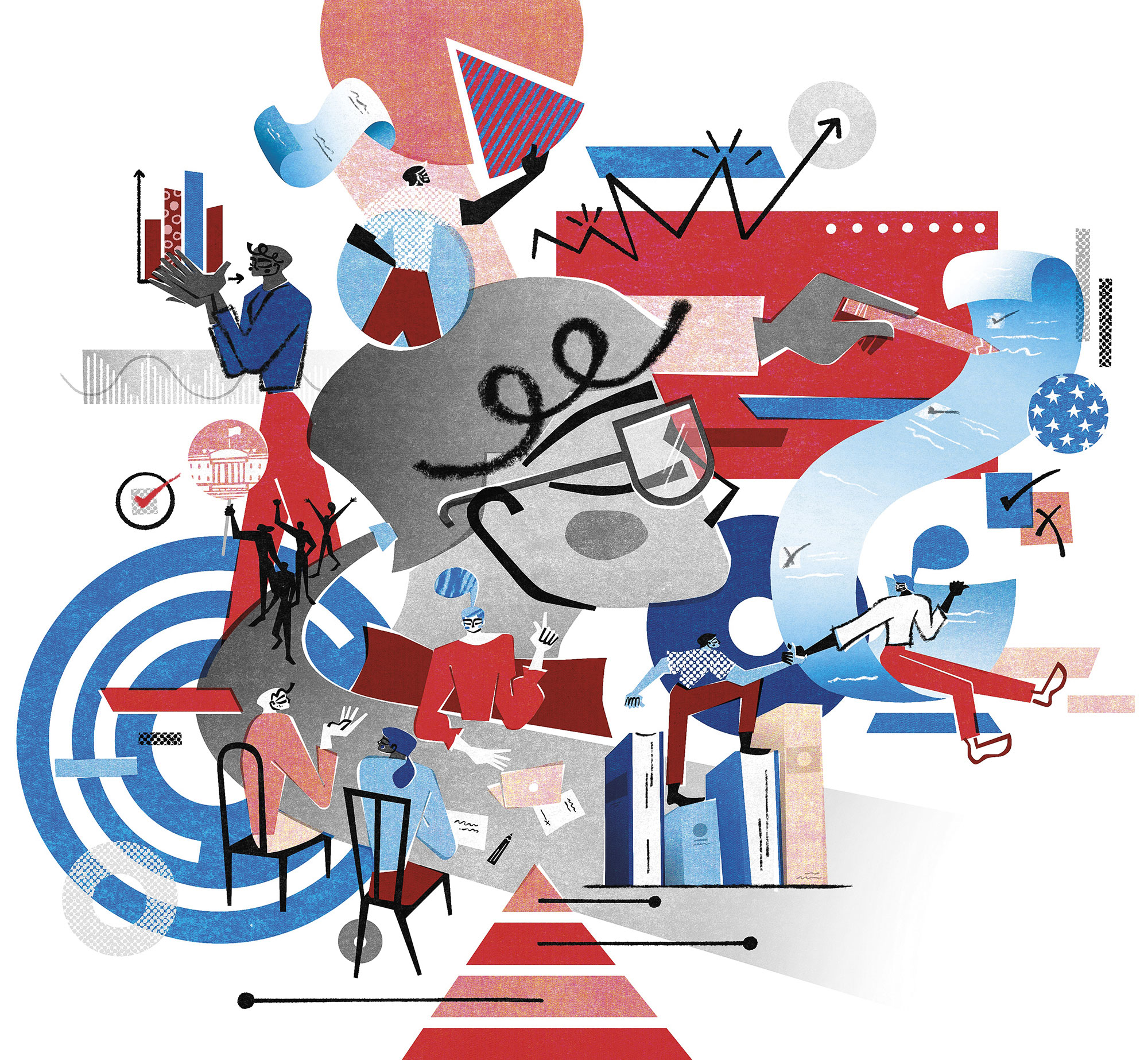Drawn together
Author Prof. Ingrid Furniss and illustrator Isabella Lu ’25 combine forces to publish a book more than a decade in the making.

Photograph by Adam Atkinson
A new book by Ingrid Furniss, which was released in July, utilizes her expertise in Chinese music archaeology and is the culmination of nearly 12 years of impassioned research. In it, the dean of the faculty and professor of art history—who specializes in early Chinese art and archaeology—explores the complex history of lutes, along with the instrument’s links to social, cultural, ethnic, and religious marginality in China.
The book, titled Lutes and Marginality in Pre-Modern China: Art History, Archaeology, and Music Iconography, also features more than 60 hand-drawn illustrations by Isabella Lu ’25. For Lu, working on a project like this, and becoming a published illustrator, was a dream realized. “I never expected for it to happen so soon,” says Lu, who has a dual major in anthropology and sociology and art history, as well as a minor in classical studies. Here, Furniss details how the duo brought together their talents for a truly special collaboration.
After having worked closely with you on the book, Lu says she particularly admires your dedication to your research. So much so, it spurred her to revive a personal project from high school: a webcomic about ancient Rome. What’s the source of your passion?
I’m a musician—I’ve been a violist most of my life. I like to joke that I’m kind of like that kid from The Sixth Sense: I see musical instruments everywhere. Whenever I’m visiting a museum or another country, I enlist the help of friends and family to find musical instruments in works of art. My extensive travels to East Asia, India, Turkey, Egypt, Cyprus, Mexico, and much of Western Europe gave me the opportunity to look at works of art through the lens of my love for music. We might not be able to reconstruct ancient musical tunes, but the instruments reveal so much about people’s everyday lives and views of the world.
My interest in Chinese music archaeology started at University of Puget Sound, where I was an Asian studies major with minors in Chinese and art history. My art history professor encouraged me to look into the field because of my musical background. In grad school, I conducted research on music archaeology at Princeton University. My first book, Music in Ancient China, was based on my dissertation and won the 2010 Nicholas Bessaraboff Prize (awarded by the American Musical Instrument Society).
I returned to Princeton as a research fellow at the Institute for Advanced Study in Princeton, N.J., where my research shifted from traditional ancient Chinese musical instruments to instruments from outside of China that were absorbed into Chinese culture.
“She brought a precision to the works and captured every detail of the objects she drew,” Furniss says.
How did you know Lu was the one to help bring your vision to life with her illustrations, and what was your team dynamic like?
Isabella was in my First-Year Seminar “Silk Roads and Sea Routes,” where she demonstrated a very clear passion for classical archaeology. When I first saw her work, which mostly consisted of lovely anime drawings, I was curious how her talent would trans-late to archaeological illustrations. I got her involved in the project because of her knowledge about the Silk Road, archaeology, and art, as well as her great artistic talent.
She joined me the summer after her first year, which was during COVID, so for a good portion of the project we worked remotely while she was with her family in Taiwan. Whenever I had a hard time getting reproduction rights to use an image of a piece of art that was necessary to make an important point in the book, I’d send that image to Isabella to draw. I felt the drawing would be more effective in getting the message across, and it really was. I relied on her a lot for 3D objects, like sculptures, musical instruments, and paintings.
What did Lu’s artistry bring to your book and the overall collaborative process?
Isabella’s illustrations were transformative for the book. She brought a precision and keen eye to the works that captured every detail of the objects she drew. Her technique and skill are truly amazing, and the project became so much more fun because she was involved in it. It was like I was watching her form into what she was always meant to be. She already had enormous talent; she just needed the opportunity to let it shine. That’s what my professors at a liberal arts college like Lafayette did for me. They encouraged me to pursue and combine my diverse interests of archaeology, music, and ancient Chinese culture. I love using projects like this to help students figure out and develop their strengths and interests.
Being a published illustrator is quite an impressive credential for Lu to have under her belt as an undergrad. How do you hope this experience will impact her down the road?
I hope she trusts her eye, sees how talented she is, and takes a sense of pride in what she did. She’s grown so much as a student, scholar, and artist. I’ve relied heavily on undergraduates for this project and others; 15 EXCEL Scholars have worked with me over the last 15 years, and they’ve made enormous contributions to my research. I hope this experience propels Isabella into her career as well, whatever it may be. My secret hope is it’s archaeological illustration.
How did having Lafayette as the backdrop help this project thrive?
There are so many schools out there where the expectation is that graduate students do all the research. But the talent already exists in students when they’re right out of high school. Isabella’s work was funded by an endowment established through gifts made in honor of late Lafayette President Arthur J. Rothkopf ’55 and Barbara Sarnoff Rothkopf. Here at Lafayette, students get the chance to dive into research opportunities, and use their multiple interests and passions to create a path forward into the future.




